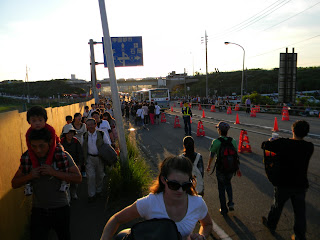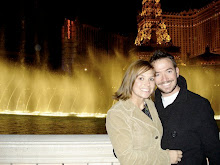Lets be honest with ourselves, fireworks are awesome. I, personally, have never heard anybody speak to the contrary. Try to imagine this conversation:
It's hard to wrap your head around what is going on here isn't it!? That's because everyone who has been close enough to a good show loves fireworks! Recently, I had a life changing fireworks experience at the Tsuchiura Fireworks Competition.
What makes the Tsuchiura Fireworks Competition so great is that it's just that: a competition. The event serves as a one-two punch of advertising and entertainment. Fireworks companies showcase the best that they have in order to entice big event organizers into hiring them. An awesome byproduct of this is the privilege of witnessing brand spankin' new fireworks, never before seen.
Background
Fireworks in Japanese is 'hanabi' which literally means 'fire flower.' Although it was the Chinese who invented fireworks some 2000 years ago, Japan has really embraced them. In fact, in the 1860s Tokyo got so amped about fireworks that they shot them off every single night over the course of two summer months each year. Yeah, they're cool, but every night!? No thanks. Eventually they toned it down to a couple festivals per summer.
Another testament to their passion for blastin' is the world record 48" (4 feet) in diameter shell from the Niigata prefecture (pictured below). This behemoth weighs about 900lbs and gets shot up over 1/2 mile high. Once it reaches full bloom it spans slightly less than 1/2 mile! Since they only launch these in Niigata, we weren't able to see this big boy in action.
Our firework viewing venue
If you've been keeping up with the blog you will remember out friend, Junichi, and his wife, Kaoru, from Agape International Chapel. They invited us to their apartment in Tsuchiura to view the show, which didn't start until 6:30. We were told to come around 3:00 to beat the rush, but we decided to leave a little later. It wasn't until we got close to the launch site that we realized why we should have left early...
"Hey dude, wanna hang out with friends, eat some food, and watch massive, colorful explosions hundreds of feet in the air?"
"Nah, man. I'd rather stay at home and watch re-runs of Jersey Shore."
It's hard to wrap your head around what is going on here isn't it!? That's because everyone who has been close enough to a good show loves fireworks! Recently, I had a life changing fireworks experience at the Tsuchiura Fireworks Competition.
What makes the Tsuchiura Fireworks Competition so great is that it's just that: a competition. The event serves as a one-two punch of advertising and entertainment. Fireworks companies showcase the best that they have in order to entice big event organizers into hiring them. An awesome byproduct of this is the privilege of witnessing brand spankin' new fireworks, never before seen.
Photo from Tsuchiura Fireworks Competition
Background
Fireworks in Japanese is 'hanabi' which literally means 'fire flower.' Although it was the Chinese who invented fireworks some 2000 years ago, Japan has really embraced them. In fact, in the 1860s Tokyo got so amped about fireworks that they shot them off every single night over the course of two summer months each year. Yeah, they're cool, but every night!? No thanks. Eventually they toned it down to a couple festivals per summer.
Another testament to their passion for blastin' is the world record 48" (4 feet) in diameter shell from the Niigata prefecture (pictured below). This behemoth weighs about 900lbs and gets shot up over 1/2 mile high. Once it reaches full bloom it spans slightly less than 1/2 mile! Since they only launch these in Niigata, we weren't able to see this big boy in action.
Here he is, in all his 48" glory being loaded in a mortar tube by crane.
Our firework viewing venue
If you've been keeping up with the blog you will remember out friend, Junichi, and his wife, Kaoru, from Agape International Chapel. They invited us to their apartment in Tsuchiura to view the show, which didn't start until 6:30. We were told to come around 3:00 to beat the rush, but we decided to leave a little later. It wasn't until we got close to the launch site that we realized why we should have left early...
We were forced off of our bikes and had to walk in a endlessly long line.
Shuttle buses were bringing people from all around Tsuchiura and dropping them off here.
We braved the chaos a little longer before finding Junichi's apartment right smack in the middle of it all. His apartment building was fenced off to keep the 100,000+ people from invading his parking lot. Most of the spectators tried to have the best view by sitting in rice fields or river bank. In fact, Junichi said that some people come claim their spot as early as 5am that morning! Dedication or idiocracy...?
Tamaya.....Kagiya!
Tamaya.....Kagiya!
Not long after arriving, Akira and his wife, Masako, joined us as well. We visited with each other for a while and commenced adult beverage consumption. Then, as the twilight faded, the show started...
Junichi said that two years ago those buildings weren't there so the view used to be perfect.
During the competition, there were two stations where companies would launch shells. This particular company, however, used both stations and all of the space in between for their show. It was the best show of the night.
As the shells travel upward you hear people saying "Tamayaaaaaaaa..." Then when it explodes they say "Kagiya!" These are the names of two very famous families of pyrotechnicians in the 1700s and 1800s. Back then, people used to cheer for their favorite company by shouting out their names. It has since become a custom to shout this out as you enjoy the show.
Sorry for the terrible photo, but you can see that some fireworks made very distinct shapes. To me this guy looked like a Pacman ghost. There were also hearts, smiley faces, UFOs, ect.
Pictures don't do them justice. Video is a little better because you can comprehend the magnitude, but it's still no substitute for the real deal. Here are a couple of videos from this year's show (not my videos):
One huge difference from any fireworks show I've seen in the U.S. is that this show lasted much longer. Most shows in America last about 30 minutes whereas the large Japanese firework displays last 2+ hours!
Another dissimilarity is that only recently have they started syncing shows with music. When this did happen, we could faintly hear music from loudspeakers in the distance. It hasn't become popular enough to broadcast over the radio yet. Thinking back, every 4th of July I can remember we would tune our radios to a station and listen to an all-American line up of "Born in the USA", "Proud to be an American", " and "The Star Spangled Banner" during the fireworks show. Obviously, that wasn't the case here.
The pupil becomes the master
Throughout the course of the two hour spectacle, we devoured a fair share of noodles, rice balls, salad, and stir fry. Following the show we decided to stay a while to let the crowds disperse. How would we pass the time...? Well, eating of course!
Junichi brought out his small propane burner and tacoyaki plate. Takoyaki, or fried octopus balls, are made by pouring a batter into half-sphere burners. You then drop cheese, chives, and octopus (or 'tako') into the center of the batter. You can really put anything you want, but this is the more traditional recipe. Once the bottom half has cooked, you use a small metal rod to flip them over and cook the other side.
One huge difference from any fireworks show I've seen in the U.S. is that this show lasted much longer. Most shows in America last about 30 minutes whereas the large Japanese firework displays last 2+ hours!
Another dissimilarity is that only recently have they started syncing shows with music. When this did happen, we could faintly hear music from loudspeakers in the distance. It hasn't become popular enough to broadcast over the radio yet. Thinking back, every 4th of July I can remember we would tune our radios to a station and listen to an all-American line up of "Born in the USA", "Proud to be an American", " and "The Star Spangled Banner" during the fireworks show. Obviously, that wasn't the case here.
The pupil becomes the master
Throughout the course of the two hour spectacle, we devoured a fair share of noodles, rice balls, salad, and stir fry. Following the show we decided to stay a while to let the crowds disperse. How would we pass the time...? Well, eating of course!
Junichi brought out his small propane burner and tacoyaki plate. Takoyaki, or fried octopus balls, are made by pouring a batter into half-sphere burners. You then drop cheese, chives, and octopus (or 'tako') into the center of the batter. You can really put anything you want, but this is the more traditional recipe. Once the bottom half has cooked, you use a small metal rod to flip them over and cook the other side.
Akira making sure the batter is ready.
Akira was proclaiming that he was the takoyaki master. Partly because takoyaki originated in his hometown, Osaka.

After the first batch, Akira taught Chelsae how to do it. This is her cooking her very first takoyaki.
Add some Japanese sauce, fish flakes, seaweed, and mayo and...wallah! Takoyaki!
(photo from chickchicksewing.blogspot.com)
Once again, I'm amazed at how blessed we are with good friends and good times.

After the first batch, Akira taught Chelsae how to do it. This is her cooking her very first takoyaki.
Add some Japanese sauce, fish flakes, seaweed, and mayo and...wallah! Takoyaki!
(photo from chickchicksewing.blogspot.com)
Everyone was impressed with how well Chelsae did so they called her the new "takoyaki master." After we finished eating (again), we decided the crowds had left so we could ride home easily. Before we mounted our bikes, we took one last photo with everyone.
Once again, I'm amazed at how blessed we are with good friends and good times.
-Seth
































